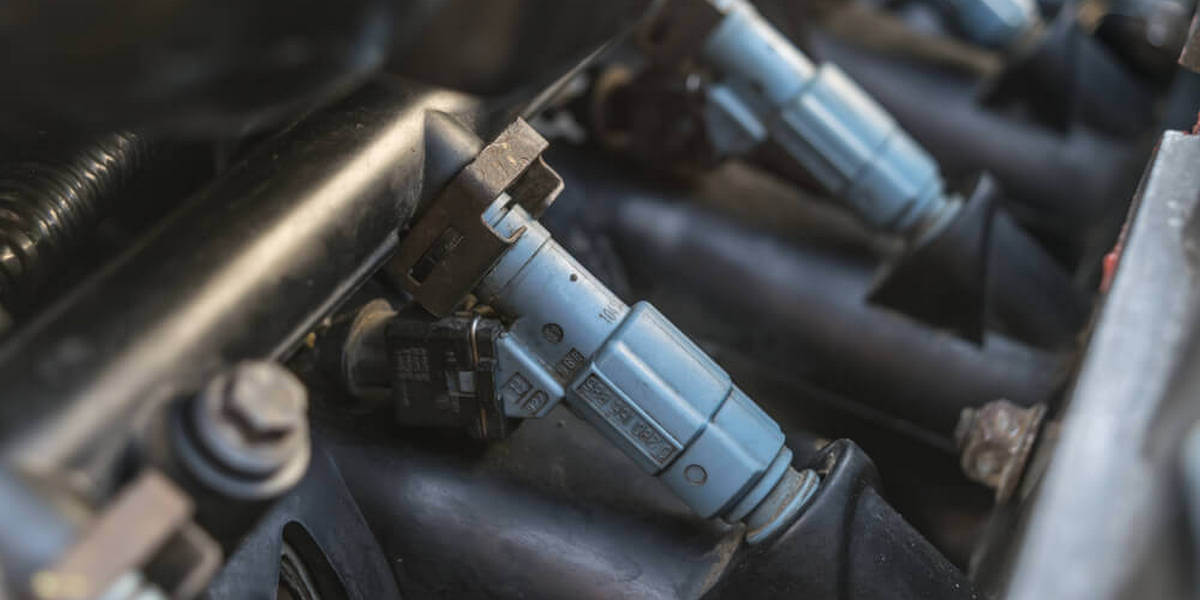
As your car starts to age, it's frequent to encounter small but annoying engine problems. One of the most common problems happening to high-mileage cars is bad fuel injectors. Any fuel system-related fault can cause a wide range of problems from check engine lights to starting and idling issues. Luckily, we are here to help you with that. This article will cover the most common signs of a bad fuel injector as well as frequent symptoms and how to fix them.
What are Fuel Injectors, How Do They Work, and Where Are They?
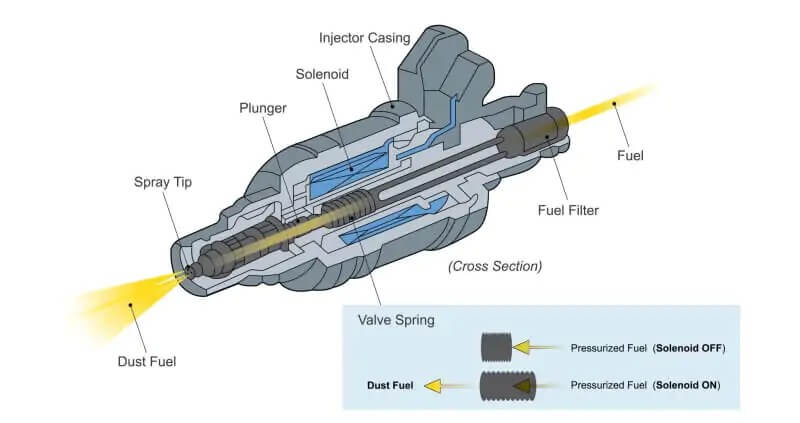

A fuel injector is like the nozzle of a spray bottle. When squeezed, the handle of the spray bottle creates pressure. As you pull the handle, a plunger retracts, allowing the pressurized water to spray. The fuel pump in your car creates the fuel pressure, and a tiny electromagnetic switch inside the fuel injector controls the plunger. When activated, the fuel injector sprays a fine mist into the intake manifold.
Your car's computer controls all of this in real-time and makes adjustments as you drive. However, fuel injectors can become dirty and fail to create a fine spray. They can also wear out, and the enlarged hole in the nozzle will start to drip.
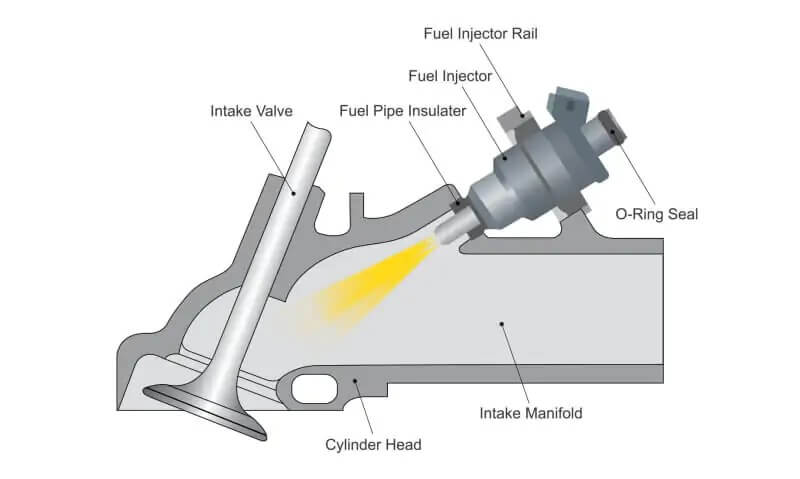

Your car has one fuel injector dedicated to each cylinder. If you have a six-cylinder, you have six injectors. Some car models use a dual-injection system with 2 injectors by cylinders but it's a rare occurrence.
Fuel injectors are installed directly on the fuel rail and have their own electrical connector. However, on most vehicles, all injectors are triggered at the same exact moment. The fuel then waits for the intake valve to open to enter the combustion chambers.
Most fuel injectors are quite easy to remove, but in some cases, a special tool might be required to unplug the fuel lines. Fuel line removal tools are often available for rent from your local auto parts store. If it's not, there's no need to worry. These tools are also easy to buy online and are often quite inexpensive.
In all cases, always remember to relieve the fuel pressure before removing an injector. If you are unsure how to do that, look inside your car's repair manual. You'll find easy-to-follow instructions to ensure you don't hurt yourself or break something.
Common Signs of Bad Fuel Injectors
The first symptom you are likely to see whenever a fuel injector goes bad is the check engine light coming on. You can use an OBD2 scanner to retrieve the codes and understand where the problem comes from.
Furthermore, as soon as one of the injectors on your engine starts misbehaving, you should notice a significant decrease in fuel efficiency. If an injector doesn't spray the fuel correctly or stops spraying altogether, your engine might stutter, misfire, or even stall. Once it happens, one or multiple cylinders might not produce any power anymore, creating a load on the other cylinder still working. That will rapidly increase the amount of fuel required to make the car move forward.
Dripping injectors might also make your engine hard to start in the morning. When injectors start to drip when the car is turned off, the accumulated fuel in the cylinders might flood the plugs, preventing them from firing. In the best-case scenario, the spark plugs will still be able to ignite the fuel, but a cloud of black smoke might come out of the exhaust.
Common Causes of Fuel Injector Problems
Over time, fuel injectors can become clogged with debris from particles that bypass the fuel filter. It is not uncommon for drivers to begin having problems with fuel injectors clogging after changing the fuel pump or filter. Small particles can become dislodged during the replacement, fouling fuel injectors later.
Fuel injectors can also wear out. Over time, the very small openings in the orifice can become enlarged or even oblong. When this happens, the spray pattern will not be optimal, and engine performance will suffer. Usually, when one injector starts showing signs of worn-out nozzles, you should preferably change all of the fuel injectors at once.
The engine's high temperatures can also cause fuel injectors to crack and leak externally. A cracked fuel injector will often present the same symptoms as a faulty one. Moreover, a cracked fuel injector will often leak fuel onto the engine. Fuel pressure is very high in fuel-injected systems, and a small leak can quickly create a hazardous situation.
A dripping fuel injector will usually make your car smell like gasoline. You might even be able to see fuel pooling or spraying when the engine is running. A cracked and leaking fuel injector should be repaired as soon as possible. You should obviously never drive a car with a leaking fuel injector.
Common OBD2 Codes for Bad Fuel Injectors
P0200-P0216 — All manufacturers use this series of codes to identify a fuel injector fault. The last two digits of the code relate to the particular fuel injector that is not responding correctly. This code could refer to a bad fuel injector or a wiring problem.
P0171 — You will see this code when your car is running lean. On V-series engines, it relates to the #1 cylinder bank.
P0174 — V-series engines will register this code when the #2 cylinder bank is too lean.
However, it's important to mention that these codes are often related to faulty O2 sensors, leaking exhaust systems and bad catalytic converters too.
Common Problems Caused by Bad Fuel Injectors
Bad fuel injectors may cause a rough idle, especially in the morning or under a heavy load. Your car may rattle and stop running, and it may even be hard to start. This happens because the engine is not able to get enough fuel to run correctly.
When you drive a car with bad fuel injectors, you may notice that your car accelerates rough and hesitates when the gas pedal is depressed. It may feel like your car is bucking or struggling to accelerate.
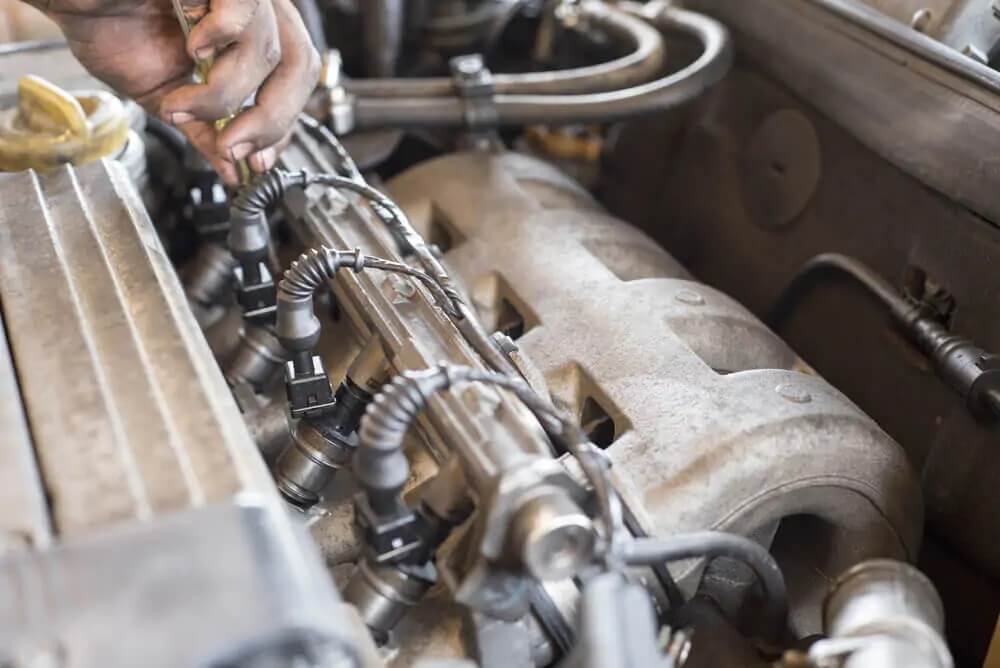

Sometimes, a bad fuel injector works well enough to not show any performance signs and won't cause an engine check light. On some occasions, an emissions test might be required to identify a faulty or partly obstructed fuel injector. Cars with defective fuel injectors frequently fail smog tests. When this happens, the owner will have to repair the problem before the car can be registered.
Any problem with a fuel injector will impact fuel efficiency. If you see your MPG rating suddenly decrease, suspect something is wrong with your injectors.
Testing Fuel Injectors
There are some tests that DIY mechanics can perform to determine whether a bad fuel injector is causing the problem. Using a stethoscope intended for automotive use, you can listen to the injector as the engine is running. You will be able to hear the electromagnetic switch opening and closing. If the injector is bad, you won't hear a click.
Special LED tools can also be connected to the back of injectors to verify they are actually getting power. If you can't hear the injector clicking while it's getting power and a good ground connection, the injector is probably faulty.
With the injector removed from the car, you can use an ohmmeter to test the fuel injector. If you get a reading of infinite ohms, your injector has an open internal circuit. If you get 0 ohms, you have a short-to-ground condition. Your service manual will tell you what's the proper resistance reading for a good fuel injector in your car.
Professional Service
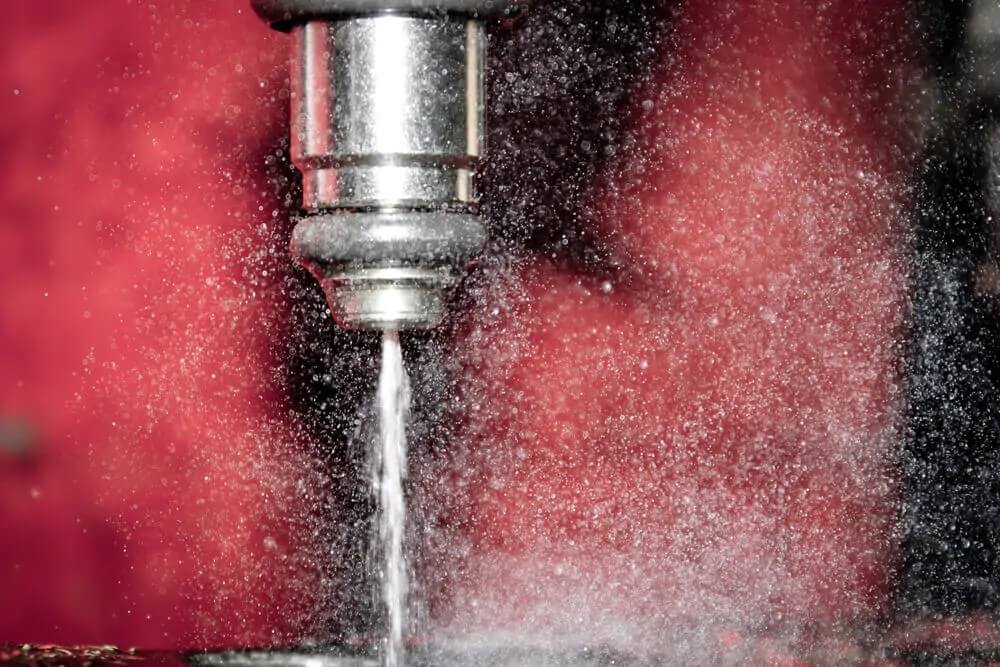

Fuel injectors are often expensive. Luckily, dirty injectors can usually be cleaned and serviced before being replaced. You usually have to take your fuel injectors out and send them to a shop for cleaning and testing. A shop will use specialized bench-testing equipment to ensure that each fuel injector is spraying properly.
Frequently Asked Questions (FAQ)
How can I tell if my fuel injector is going bad?
Common signs of a failing fuel injector include a check engine light, rough idle, decreased fuel efficiency, difficulty starting, and black smoke from the exhaust. An OBD2 scanner can help identify specific issues.
Can I clean fuel injectors myself?
While fuel injector cleaner additives can be used for minor build-up, heavily clogged injectors may require professional ultrasonic cleaning or bench testing for thorough cleaning and testing.
What causes fuel injectors to fail?
Fuel injectors can fail due to clogging from debris, wear and tear over time, and external damage from engine heat. Regular maintenance and using high-quality fuel can help extend their lifespan.
Is it safe to drive with a bad fuel injector?
Driving with a bad fuel injector can lead to poor engine performance, reduced fuel efficiency, and potentially more severe engine damage. It's best to address the issue promptly to avoid costly repairs.
How much does it cost to replace a fuel injector?
The cost of replacing a fuel injector can vary widely depending on the make and model of your vehicle and whether you're replacing all injectors or just one. Generally, you can expect to pay anywhere from $100 to $500 per injector, plus labor costs.
Last Words
Fuel system issues, particularly with fuel injectors, can seem daunting at first, but they're often more straightforward to resolve than you might think. With the right tools, a reliable repair manual, and a basic understanding of automotive mechanics, tackling a bad fuel injector can be a manageable DIY project. It's empowering to know that you don't always need to rush to a mechanic for these kinds of repairs. However, if you're ever uncertain about your diagnosis or feel overwhelmed by the task, it's crucial to consult a certified mechanic.
At the first signs of a bad fuel injector—whether it's a check engine light, rough idling, or reduced fuel efficiency—taking swift action can prevent more serious issues down the line. Remember, staying on top of these repairs not only keeps your car running smoothly but also ensures your safety on the road. So, roll up your sleeves and dive in, but don’t hesitate to seek professional help when necessary.
